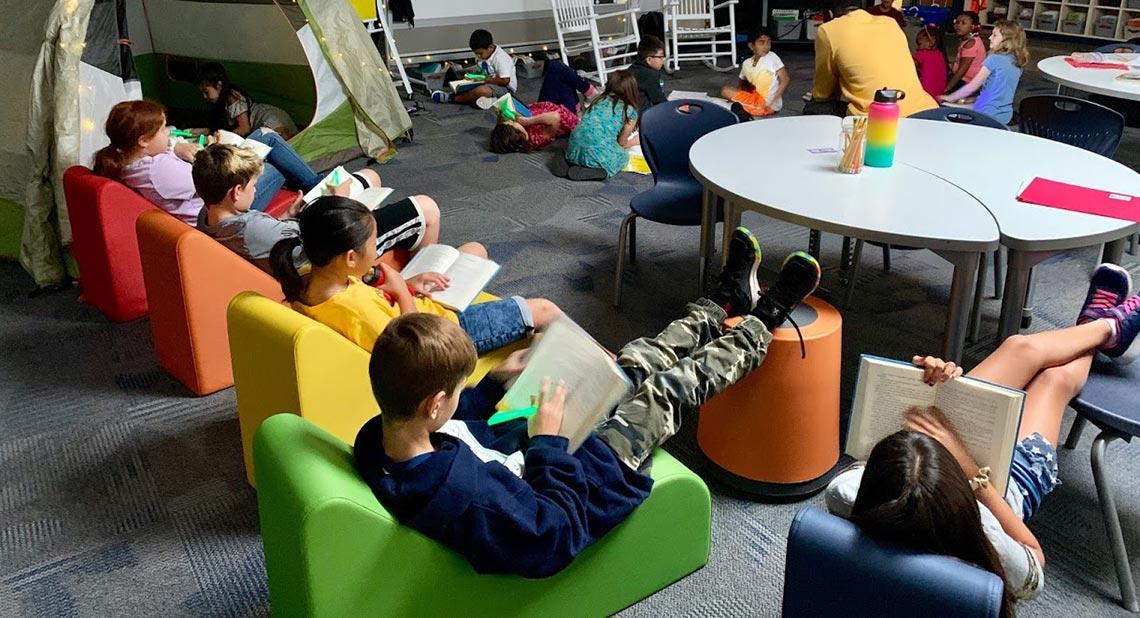
On the evening of September 9, pod A at Kyrene de las Manitas buzzed with activity as students showed off their new learning space in a newly launched prototype program. Enthusiastic third and fourth grade students built Lego robots, programmed Spheros and gave demos with 3D printers. In another area, parents and students waved their arms in front of themselves in seemingly random patterns as they explored Paris and the deep sea through virtual reality goggles.
This ribbon-cutting event celebrated the opening of a new Kyrene learning environment developed by Kyrene school and community members in collaboration with ASU’s Mary Lou Fulton College for Teaching and Learning Innovation. Parents, students and visiting dignitaries — state Senator Sean Bowie, state Representatives Mitzi Epstein and Jennifer Jermaine, and Tempe Mayor Mark Mitchell — wandered the space, chatting about students’ experiences during their first weeks of school.
During the formal remarks of the ribbon cutting ceremony, students wiggled in excited anticipation. Students clapped as a video announced their new school-within-a-school name as SPARK: Student-Led; Project-Based; Achieving; Real-World; Knowledge.
In addition to the cutting edge technology, which is what many visitors notice first, this learning environment also has a softer side. The educator team works closely with students, building deep relationships and collaboratively determining how to best meet student needs. Students learn through educator-designed units addressing driving questions like, “How can I appreciate the uniqueness of those around me?”
During “Camp Read-a-Lot” last month, students spread out in front of a campfire projected on the large classroom monitor. Some parents have happily reported that their children are reading at home — voluntarily! — for the first time ever. Students are learning about how to regulate their emotions and engage in breathing exercises and yoga together.
While reading Who Is Malala Yousafzai?, students conducted research about Pakistani culture and gave presentations to each other. After students finished their research, three local community members visited SPARK to share their deep knowledge of Pakistani culture. Students were thrilled to take home papers with their names written in Urdu. In the guest speaker session about Pakistani geography and history, a fourth grade student asked a poignant question: “Is Kashmir still being fought over?” After seeing pictures of Pakistani “Truck Art,” one student exclaimed with wonder, “Being there is like walking in an art gallery!”
In a world of ubiquitous screens and gadgets, we are still learning how to leverage technology to best meet student needs. The SPARK educators know that technology is a piece of the picture, but it’s not the only, or even most important, component. Engaging with real-world, project-based experiences in a safe, supportive environment is the foundation for learning that lasts. It’s that foundation that makes these students’ eyes sparkle as they walk into the classroom each day. We can’t wait to see how that learning grows and continues to emerge as the year continues.